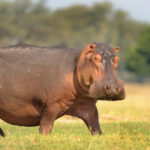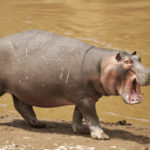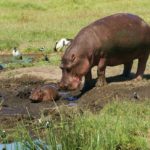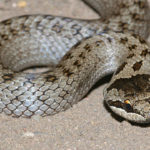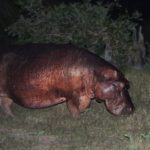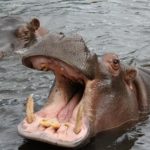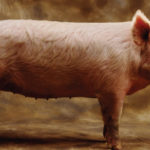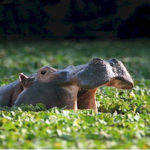Hippos
 The Hippo, is a beast from a group of Artiodactyls, in which, together with wild boars and wild pigs, forms a separate suborder of non-ruminants. In the world only two kinds of hippopotamuses are known – ordinary (it is called simply behemoth) and dwarfish (this species is little known).
The Hippo, is a beast from a group of Artiodactyls, in which, together with wild boars and wild pigs, forms a separate suborder of non-ruminants. In the world only two kinds of hippopotamuses are known – ordinary (it is called simply behemoth) and dwarfish (this species is little known).
The species of these animals is so peculiar that it is difficult to imagine their relationship to other ungulates. The growth of the hippopotamus does not exceed 1.5 m (the height of the pygmy hippopotamus is even less – 70-80 cm), but the mass can reach 3-3.5 t (in dwarf, respectively, 200-250 kg)! That is, the weight of the hippopotamus is comparable to the weight of the elephant. This is due to the fact that the behemoth is an extremely well-fed beast.
His body is very thick, the head of enormous size rests on such a short neck that it seems as though she does not have a hippo at all. The hippo’s muzzle, long and broad at the same time, expands towards the end. The eyes and ears of this beast are very small, and the eyes and nostrils are located on the top of the skull.
The legs of the hippo are short and thick, ending in short fingers with tiny hoofs. The tail is also very short. The body of the hippopotamus is covered with thick bare skin of gray color. This skin has a high regenerative ability, so the superficial wounds and scratches of the hippo heal very quickly. And it can not inflict deep wounds because a thick fat layer is hidden under the skin, which protects internal organs from damage. Hippos have another amazing ability – their sweat is red, so in the heat it seems like the animal is bleeding. Since hippopotamus can not re-chew food as ruminants, its stomach has a very complex structure and consists of three chambers. A by-product of such digestion is a large number of gases, from which the animal gets rid of wide open mouth.
Both kinds of hippos are African inhabitants. An ordinary hippopotamus is found almost throughout the continent except in the extreme north, the dwarf hippopotamus is confined to the tropical belt (Nigeria, Liberia, Sierra Leone, Guinea). Hippos are strongly attached to water, so they are found only along the banks of rivers with a slow flow and in swamps. These animals live in herds of 10-30 individuals (many adult males are kept separately). Most of the time, the hippos either feed on the shore (usually at night), or rest in the water (during the day). On the shore, hippos are slow and move slowly.
In places where animals are often they trample down trails, and the depth of the track can reach half a meter. In case of danger, hippos rush to the water at a speed of up to 40 km / h! In the water, the hippopotami swim badly, preferring to go over the bottom with their feet. But they can spend a lot of time under water (3-5 minutes without emerging), they even sleep under water, automatically rising to the surface for inspiration.










